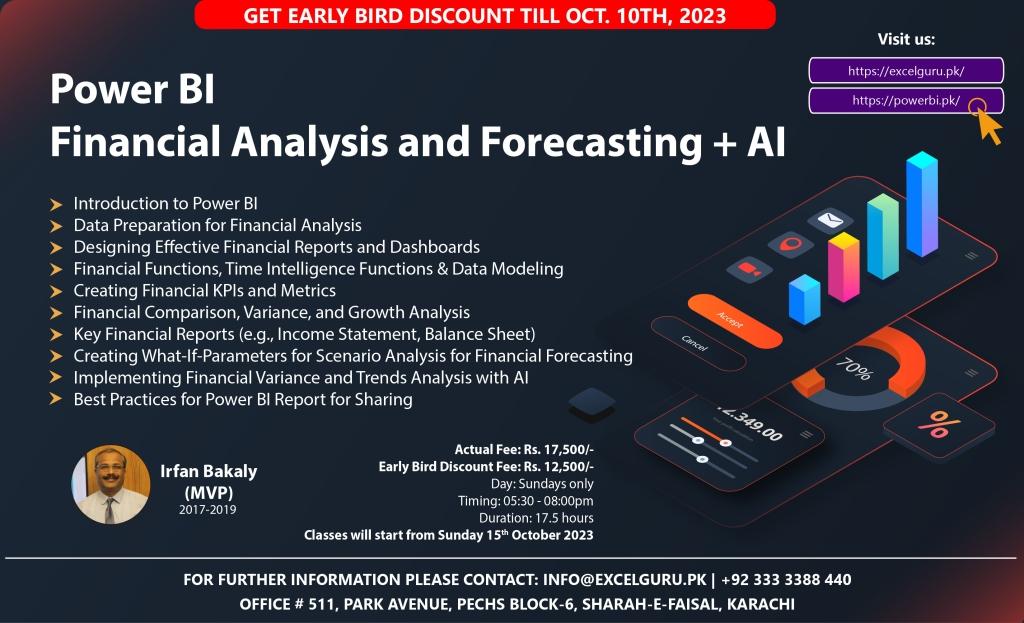Why did we develop Financial Analysis and Forecasting in Power BI instead of Excel?
While Excel is a powerful tool for financial analysis and forecasting, Power BI has several advantages when it comes to analyzing and visualizing large sets of data.
- Scalability: Excel has limitations when it comes to handling large sets of data. Power BI, on the other hand, is built for handling and analyzing large volumes of data. It can process data from multiple sources and handle complex relationships between tables.
- Data Modeling: Power BI has a robust data modeling engine that allows users to create a data model that is easy to understand and work with. The data model can be customized to meet the specific requirements of the business, and it can be used to create complex calculations and measures.
- Visualization: Power BI offers a wide range of visualizations that can be used to create interactive reports and dashboards. The visualizations can be customized to meet the specific needs of the business and can be easily shared with others.
- Collaboration: Power BI allows users to collaborate with others in real-time. This makes it easy to share reports and dashboards with colleagues and stakeholders, and to work together on analysis and decision-making.
- Automation: Power BI allows users to automate data refreshes and report creation. This saves time and reduces the risk of errors, and ensures that the reports and dashboards are always up-to-date.
- Integration: Power BI integrates with other Microsoft products, such as Excel, SharePoint, and Teams. This makes it easy to share data and insights across different departments and teams within the organization.
Power BI provides a more powerful and flexible platform for financial analysis and forecasting than Excel. While Excel is still a valuable tool for analyzing small sets of data, Power BI is better suited for larger and more complex datasets.

